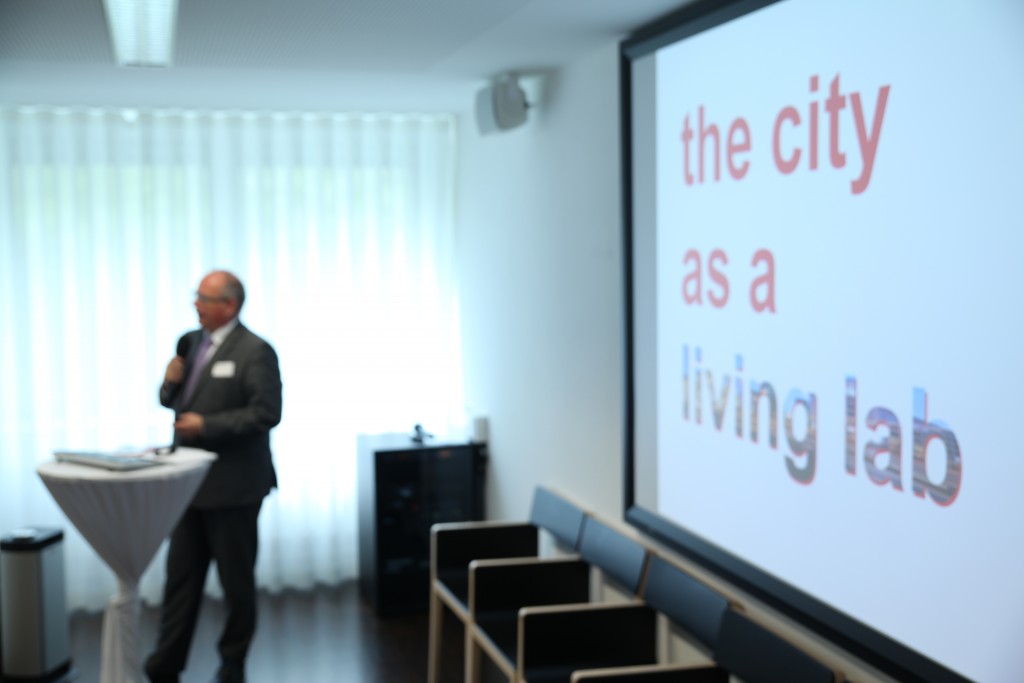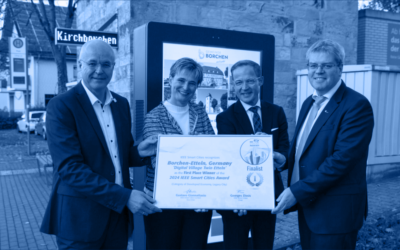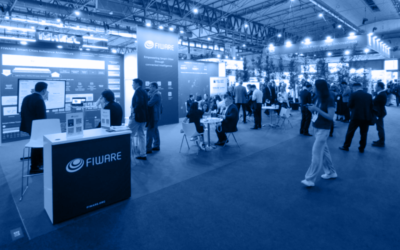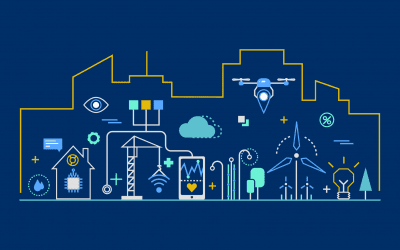Discussions at this week’s FIWARE Founders Event, held in Vienna (Austria) on 1 June, centred on three major themes that show not only where FIWARE stands at the midpoint of 2016, but also reflects the current state of the broader push for a global Internet of Things (IoT)-enabled information management infrastructure.
FIWARE Founding partners, European Commission delegates, city leaders and industry (from startups, to mid-size businesses to global companies) all talked in terms of FIWARE’s evolution, with three major points repeatedly touched on by speakers:
-
The requirements for a smart city infrastructure
-
How IoT evolves from service optimization to economic empowerment
-
How a smart cities infrastructure can become a broader IoT fabric for industry and agriculture.
“Today, the FIWARE community has made a commitment to the future,” said Jesús Villasante, Head of Unit at the European Commission’s DG Connect. “This is the beginning of a new phase. I believe FIWARE will be a success in the market. It will be a global platform, it will be open, and today marks the beginning of that process.” Villasante pointed out that up until this month, FIWARE has been growing its technology and ecosystem, whereas the Founders meeting held this week now signals the start of a phase where FIWARE is ready to enter the market.
A Smart City Infrastructure
Cities that have taken up the use of FIWARE for their projects shared some of the guiding principles that led to their support for the platform. The City of Eindhoven has spelled this out clearly in its IoT Charter, which acknowledges:
-
Citizen privacy must come first
-
Data must be open
-
The platform must embrace open standards
-
The infrastructure must be “modular” in its design so that components can be plugged into a diverse range of value chains created to meet local needs.
“It is a unique occasion to see that you are not the only city having the problems you have,” explained Patrice Slupowski, VP Digital Innovation at Orange, one of the members of the FIWARE Foundation. “No city should feel they are the only one to have these problems. So you are able to look at other cities that have created solutions on top of FIWARE and share and reuse these solutions.”
Gema Roig, Project Coordinator at Inndea Valencia, an agency in charge of bringing innovation to Valencia, agreed: “This will be really useful because all of the solutions developed and tested in Valencia could be scalable to the rest of the cities of Europe, or around the world, who use FIWARE.”
Vienna, Malaga, Valencia and Eindhoven all spoke of the strengthening ability that FIWARE provides in helping them solve urban challenges by using open source technologies, and the opportunity the FIWARE platform gives them to share their experiences with other cities that have similar problems.
From Service Optimization to Economic Empowerment
Once cities began using FIWARE’s smart city infrastructure, a profound evolution began to emerge. Firstly, FIWARE enabled service optimization.Cities began the day by discussing how they use FIWARE for installing electric stabilizers & flow restrictors for public lighting, managing photovoltaic and wind powered street lamps, enabling intelligent monitoring of public buildings, and installing digital water metering networks. All of these service solutions reduced energy and resource consumption and better managed a city’s limited resources and budget.
But as FIWARE infrastructure began to open data to support citizens, or even host data from third parties enabling multiple business models, a second wave of innovation occurrs that can foster new local economic development. In this respect, cities find that FIWARE becomes a crucial enabler for developing an Economy of Data.
Gail Kent, from the European Commission’s DG Connect, summed it up by saying: “What I have found particularly interesting is the whole ecosystem around FIWARE. In the presentations from Valencia, Eindhoven and Malaga, for developers and for startups, it enables them to develop easier and faster. For corporates, it gives them better access to innovators and to startups. For end users, it gives smarter and better services for the citizen.”
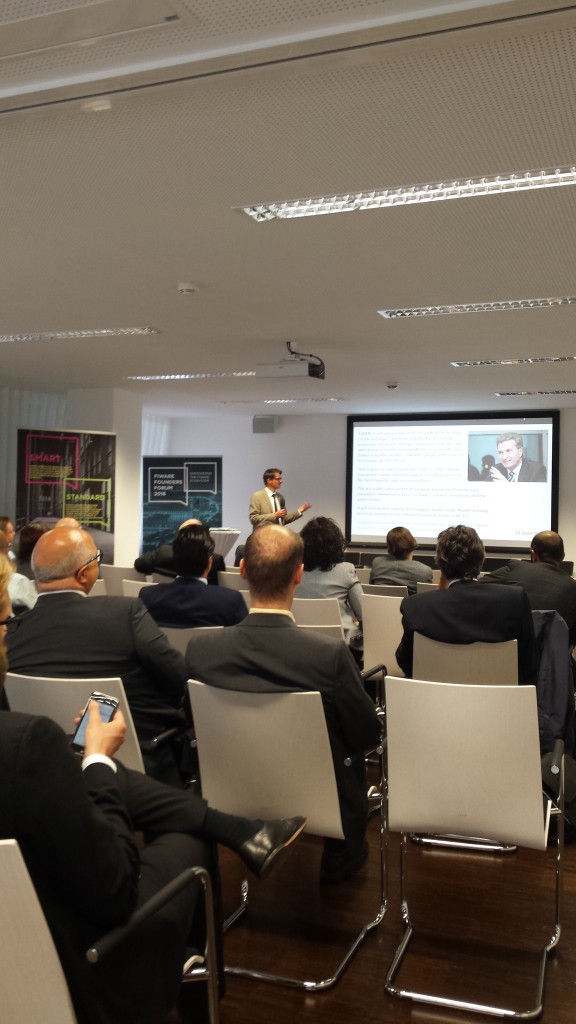 Orazio Viele, Director General of Research and Innovation at Engineering, one of the members of the FIWARE Foundation, said that FIWARE was enabling a new era of co-opetition: “That is, competition with co-operation with other companies to expand and enlarge the market and standardize solutions. On the one side, the city or industry are customers of FIWARE. On the other side, some of these companies and municipalities participate in FIWARE to standardize the solution.”
Orazio Viele, Director General of Research and Innovation at Engineering, one of the members of the FIWARE Foundation, said that FIWARE was enabling a new era of co-opetition: “That is, competition with co-operation with other companies to expand and enlarge the market and standardize solutions. On the one side, the city or industry are customers of FIWARE. On the other side, some of these companies and municipalities participate in FIWARE to standardize the solution.”
What all speakers shared from their experiences was that as FIWARE is taken up by a city, it is first leveraging data, sensors, technology and city infrastructure to optimize services. But as FIWARE is built on a modular, open source design, it means that solutions can be scaled to other cities, which creates new business opportunities for innovators on the platform. In addition, as more specific data is created and shared on the platform, that too creates new economic opportunities for data providers.
From smart cities to smart industry and smart agribusiness
The IoT-enabled infrastructure that FIWARE helps to deploy has proven itself valuable not only to the smart city domain but other sectors.
“All of the cities demonstrated the importance that they have in an open platform. Next to cities, we add new sites coming from industry and agribusiness,” said Hubert Tardieu, from ATOS, another member of the FIWARE Foundation.
“What I do expect is that the take up of the FIWARE technology will really accelerate,” shared William Jonker, CEO of EIT Digital, who participated in Wednesday’s event. “I think it was a very wise idea to focus first on one area, which was smart cities, but, of course, the FIWARE technology is much more generic and can work in industry, food and agriculture, and health.”
Rosalia Simon, Telefonica’s IoT Smart Cities Director summed up the evolution as she sees it: “Today we have the technology, the platform, the ecosystem. What we need now are more use cases, more industries and more companies of different sizes. The difference with other platforms in the market is first of all, FIWARE is open. The natural evolution is that you do a pilot with a customer, you discover things with that customer, you enhance both the use case of that customer but also your own platform, and then you move forward to a different customer in a different industry.”
As FIWARE enters the market as a proven smart city infrastructure fabric, the next stage will be to continue growing the use cases, as Simon says. Along with that will come the economic dimension: FIWARE has the potential to foster a new economic equality where multiple actors — from local businesses and startups to global co-opetitors — can all share in revenue generating and business opportunities reflective of their individual contributions and of the innovation value they co-create. Defining those business models is the next stage of work that will begin to emerge now that FIWARE is industry-ready.
We have assembled a number of interviews with some of the main participants of the Founders event. You can watch them in our video-album.
Find also the agenda followed during the event.

